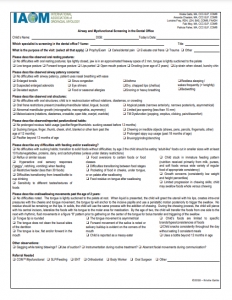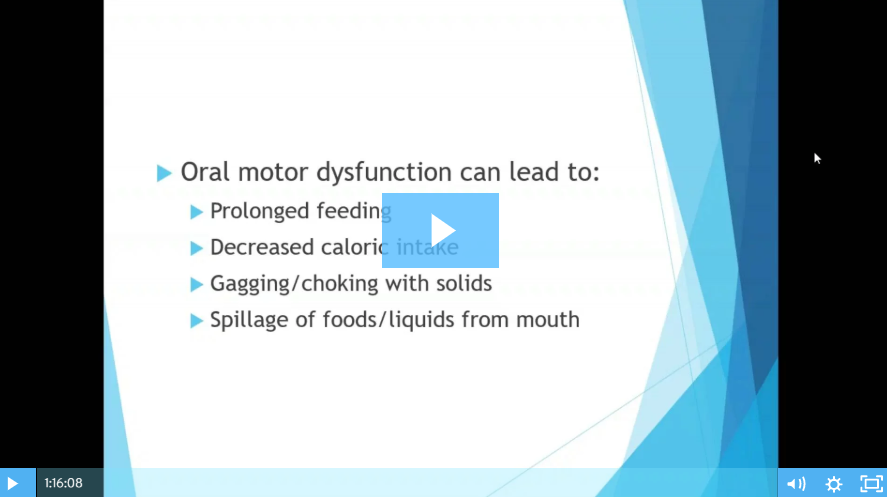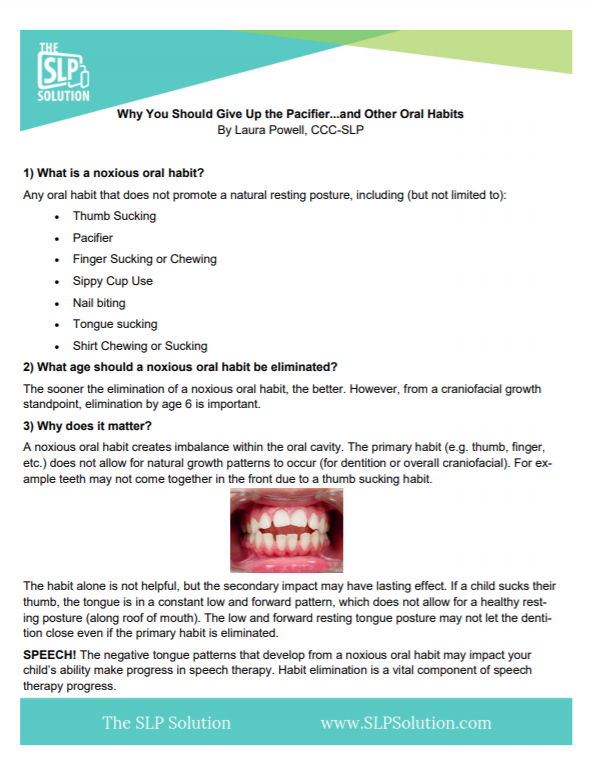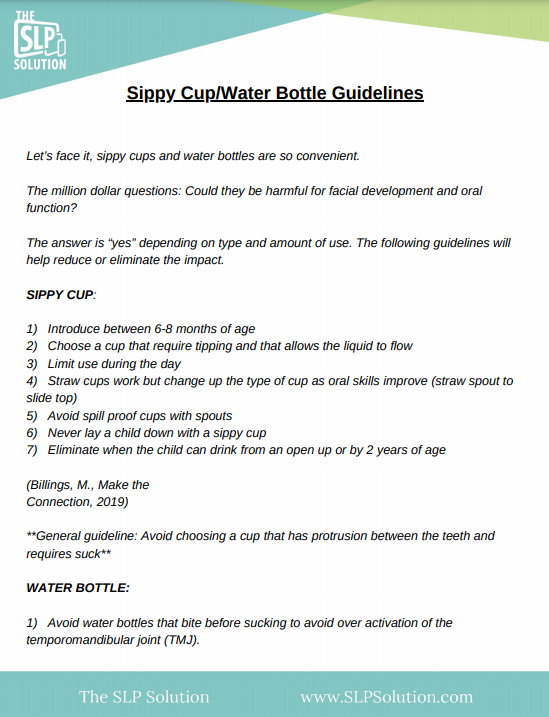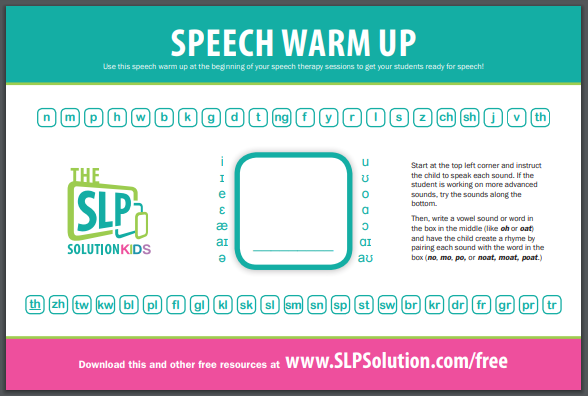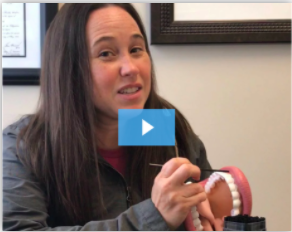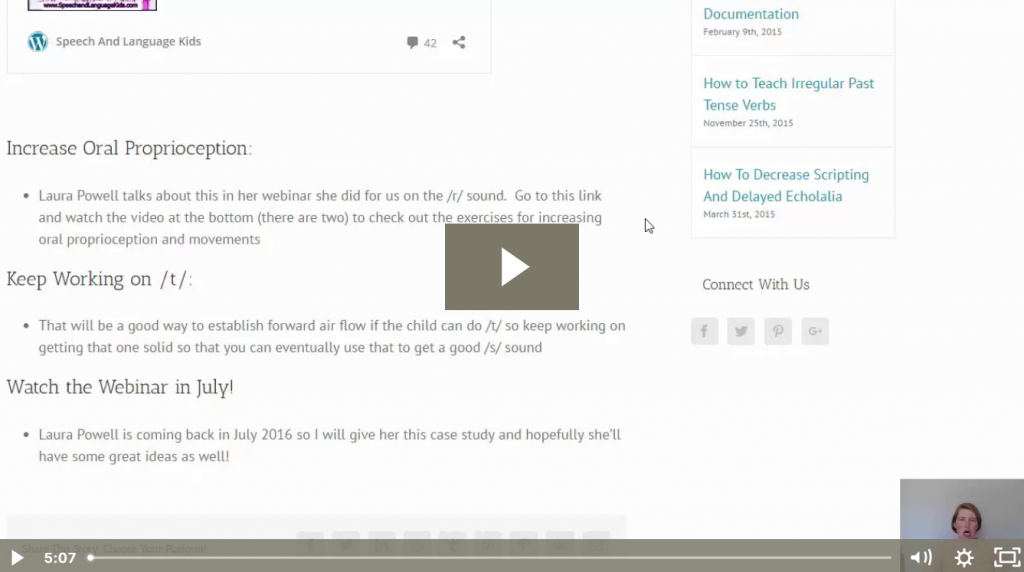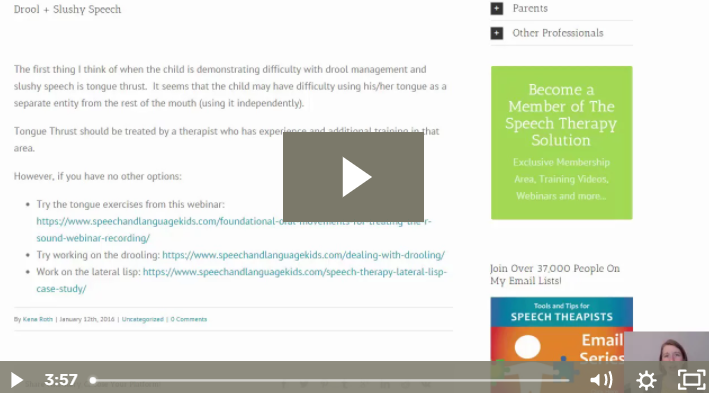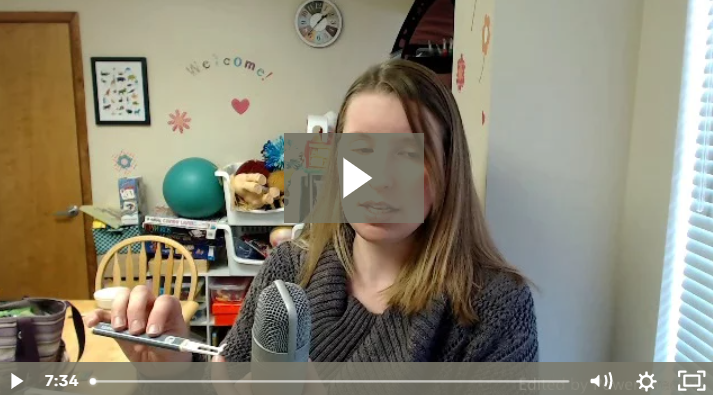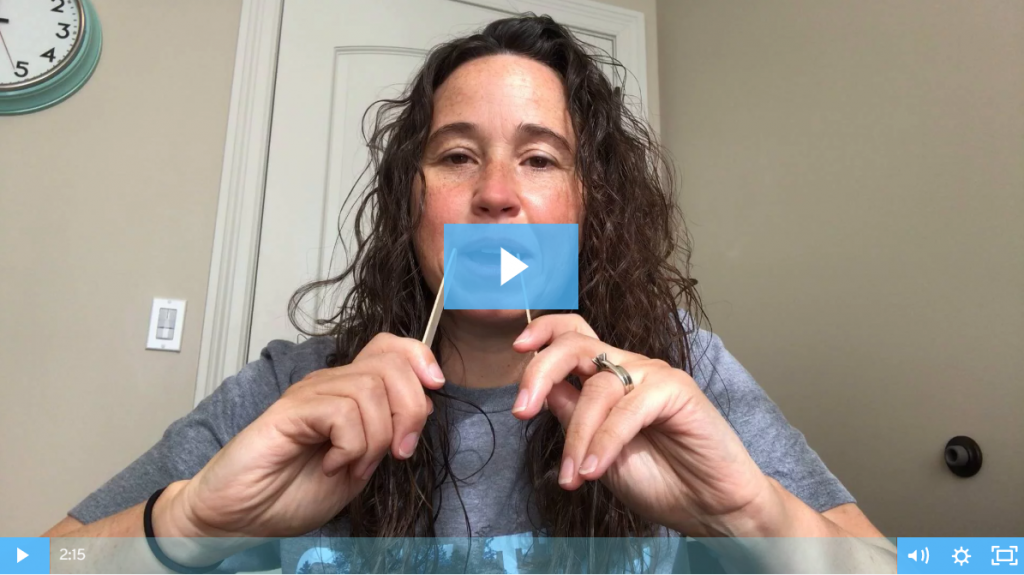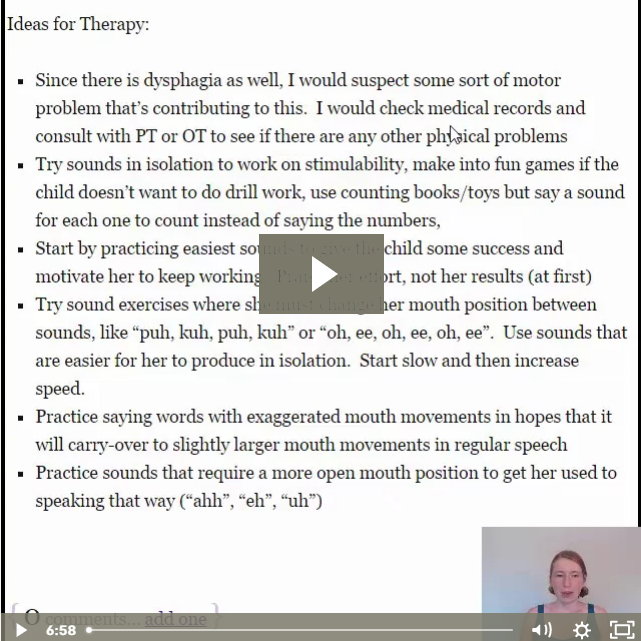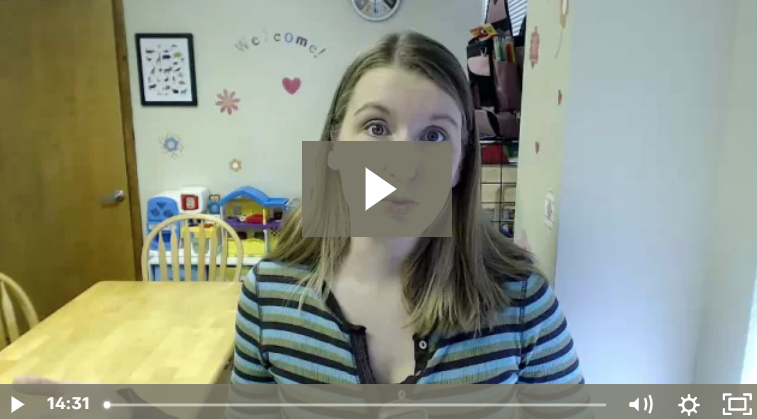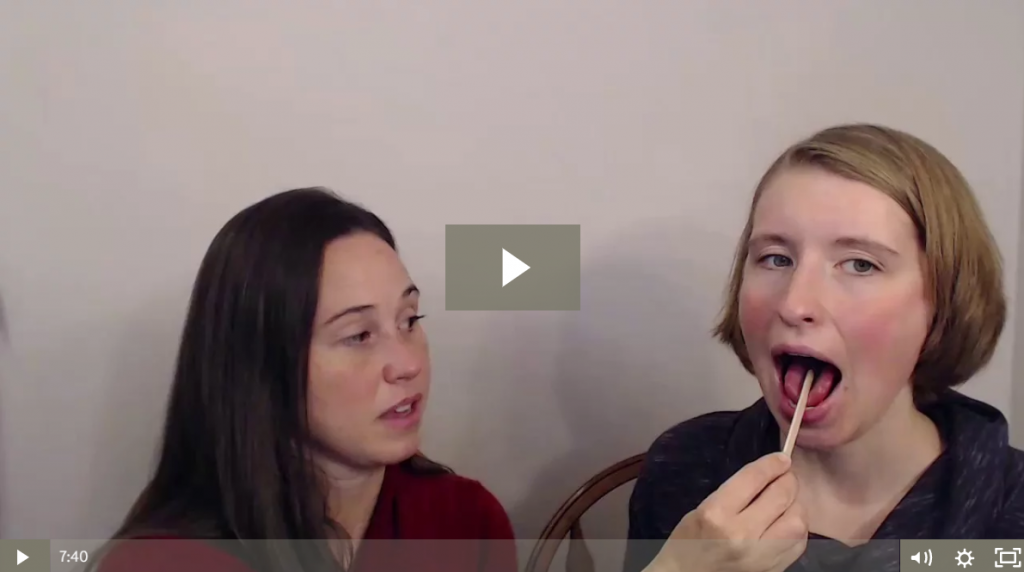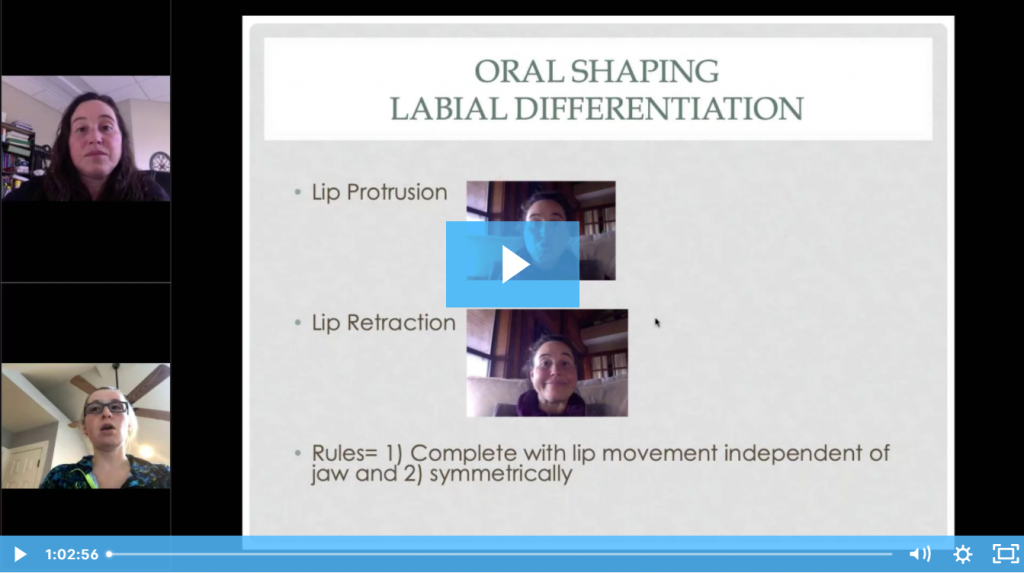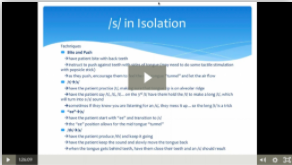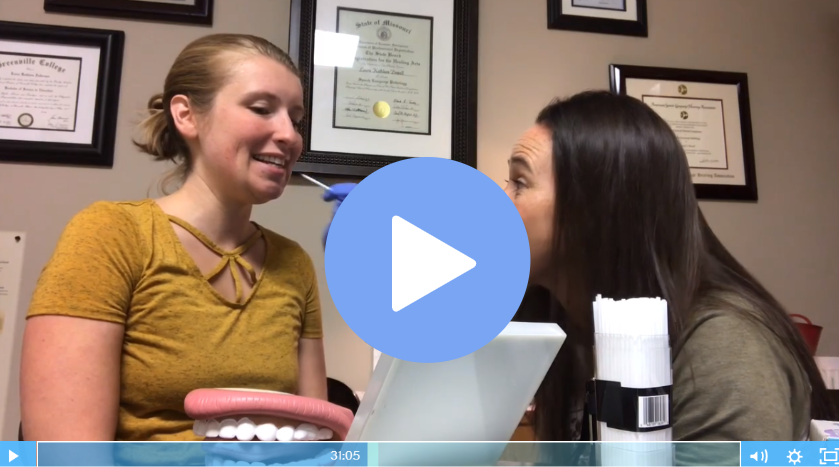Condition: Orofacial Myofunctional Disorders (Including Tongue Thrust)
Overview of Myofunctional Therapy
Definition:
Orofacial myofunctional disorders (OMDs) are patterns involving oral and orofacial musculature that interfere with normal growth, development, or function of orofacial structures, or call attention to themselves (Mason, n.d.A). OMDs can be found in children, adolescents, and adults. OMDs can co-occur with a variety of speech and swallowing disorders. OMD may reflect the interplay of learned behaviors, physical/structural variables, genetic and environmental factors (Maspero, Prevedello, Giannini, Galbiati, & Farronato, 2014).
(Source: https://www.asha.org/practice-portal/clinical-topics/orofacial-myofunctional-disorders/ )
Tongue thrust (protrusion of tongue between teeth during swallow/rest/speech) is one aspect of and fits under the umbrella of orofacial myofunctional disorders. The area of orofacial myofunctional disorders (OMD) encompasses many aspects of facial and oral muscle dysfunction.
Etiology for OMD includes a variety of factors, including, but not limited to; noxious oral habit, mouth breathing, ankyloglossia, etc. Sometimes the symptom of the OMD presents as an articulation disorder. It is important to be aware of areas of OMD so that treatment of an articulation disorder that stems from and OMD can be targeted most effectively (by a person trained in OMD).
Specializing in OMD can be an extensive process, however, by having the appropriate and sufficient training the disorder can be appropriately addressed. If an underlying OMD is suspected, referring to an OMD specialist may be the most appropriate course of treatment.
Signs and Symptoms:
From the International Association of Orofacial Myology:
Orofacial Myofunctional Disorders are atypical, adaptive patterns that emerge in the absence of normalized patterns within the orofacial complex. The regular presence of these adaptive movements can often result in a variety of disturbances.
Examples of Orofacial Myofunctional Disorders include one or a combination of the following:
- Thumb and finger sucking habits
- A routine habit of resting with the lips apart
- A forward resting posture of the tongue between or against the teeth
- Tongue Thrust
- Other harmful oral habits
Orofacial Myofunctional Disorders are often related to, or can contribute to a variety of medical and dental disorders. These disorders can include:
- Malocclusion (improper alignment of the teeth)
- Periodontal disorders
- Orthodontic relapse
- Changes associated with abnormal jaw growth and position
From ASHA:
Signs and symptoms of orofacial myofunctional disorders may include:
- Open mouth, habitual lips-apart resting posture (in children, adolescents, and adults)
- Structural abnormalities
- Restricted lingual frenulum
- Dental abnormalities, such as excessive anterior overjet, anterior, bilateral, unilateral, or posterior open bite, and under bite
- Abnormal tongue rest posture, either forward, interdental, or lateral posterior (unilateral or bilateral), which does not allow for normal resting relationship between tongue, teeth, and jaws, otherwise known as the interocclusal space at rest, or the freeway space (Mason, 2011)
- Distorted productions of /s, z/ often with an interdental lisp. Abnormal lingual dental articulatory placement for /t, d, l, n, ʧ, ʤ, ʃ, ʓ/
- Drooling and poor oral control, specifically past the age of 2 years
- Nonnutritive sucking habits, including pacifier use after age of 12 months, as well as finger, thumb, or tongue sucking (Warren & Bishara, 2002; Warren, et al., 2005; Zardetto, Rodrigues & Stefani, 2002)
- Lack of a consistent linguapalatal seal during liquid, solid, and saliva swallows.
- Interdental lingual contact or linguadental contact with the anterior or lateral dentition during swallows.
Evaluation:
Diagnosis of orofacial myofunctional disorders should be conducted by a speech-language pathologist who has additional training and certification in working with this type of disorder.
Types of Specialists According to IAOM:
A Certified Orofacial Myologist is an individual who has gone above and beyond taking an introductory course in Orofacial Myology and has undergone a rigorous certification process which includes both a written and an onsite clinical examination process. All Certified Orofacial Myologists remain accredited through the IAOM and participate in recurrent continuing education courses to access the most current science and treatment methodologies available.
An Orofacial Myologist is a professional with a speech-language pathology, dental or dental hygiene clinical background who undergoes introductory coursework in the etiology and treatment of Orofacial Myofunctional Disorders.
Myofunctional Screening Form:
The IAOM offers a free, printable myofunctional screener that can be used to identify the signs and symptoms of myofunctional disorders. Click here to visit the IAOM website to access this free screener:
In addition, here is another resource on evaluating this condition:
Evaluation of Feeding & Swallowing Disorders – Webinar Recording
A one-hour webinar recording that shows you how to conduct a comprehensive evaluation of feeding and swallowing skills in children.
Suggested Goals:
Myofunctional therapy goals may include any of the following targets:
- Improve oral proprioception and coordination
- Improve speech sound productions
- Improve swallow patterns
Therapy:
Sometimes the symptom of the OMD presents as an articulation disorder. It is important to be aware of areas of OMD so that treatment of an articulation disorder that stems from and OMD can be targeted most effectively (by a person trained in OMD).
Specializing in OMD can be an extensive process, however, by having the appropriate and sufficient training the disorder can be appropriately addressed. If an underlying OMD is suspected, referring to an OMD specialist may be the most appropriate course of treatment.
Supplemental Materials:
Training Videos:
These short videos will give you information about treating this condition.
How to Deal with Oral Structural Problems
Such as tongue tie, missing teeth, velopharyngeal insufficiency, etc.
Webinar Recordings:
These one-hour long webinar recordings will give you in-depth information about this topic.
Didn’t Find What You’re Looking For?
We’re constantly working on adding new features and topics to this membership site. If you don’t find what you’re looking for by using the search bar at the top of the page, please use the button below to request new features or topics to be added!

